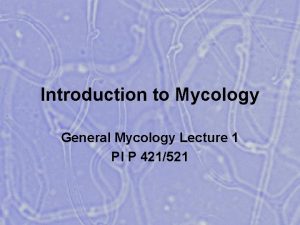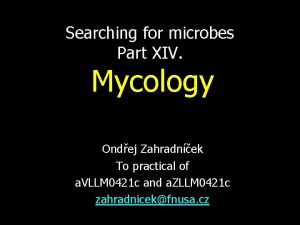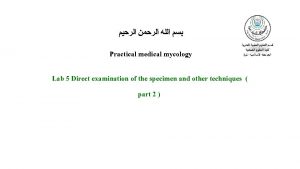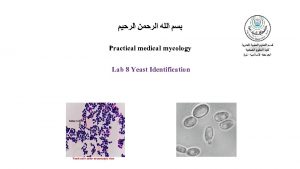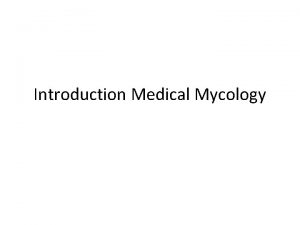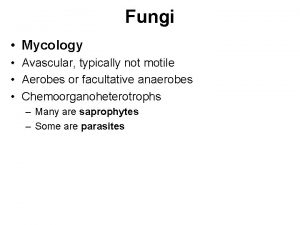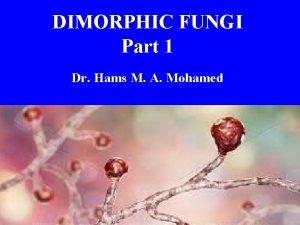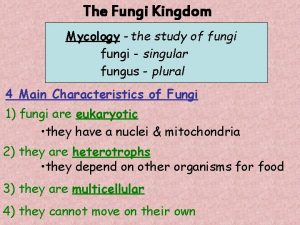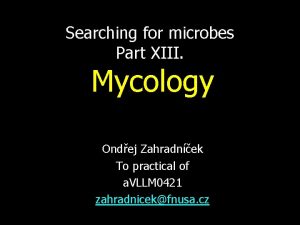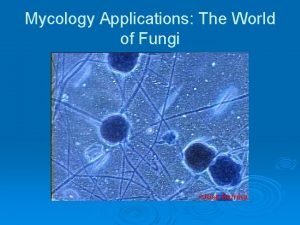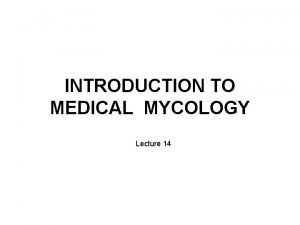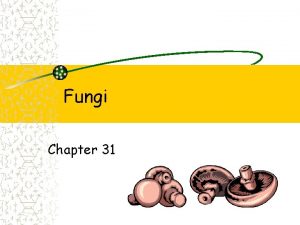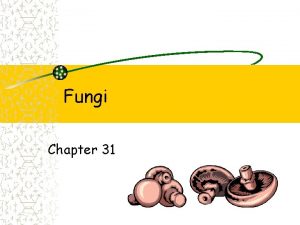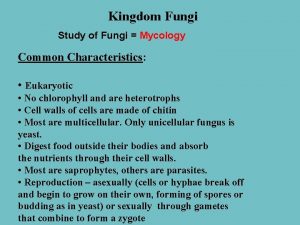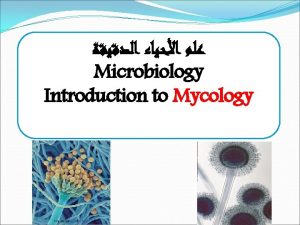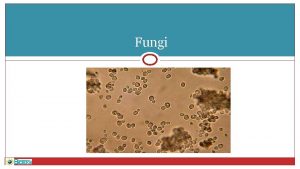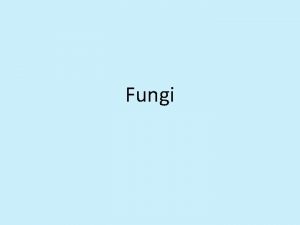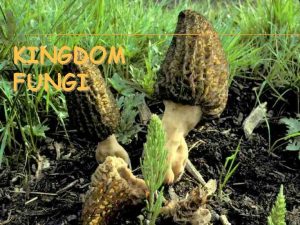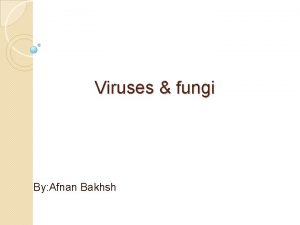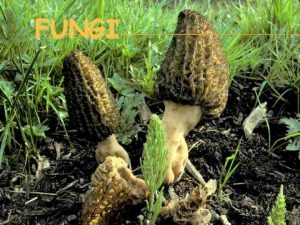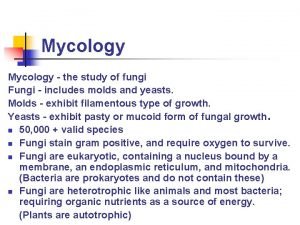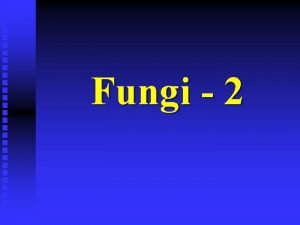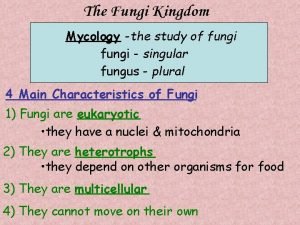Introduction to Fungi Mycology Main Characteristics of Fungi















- Slides: 15

Introduction to Fungi (Mycology)

Main Characteristics of Fungi • Eukaryotic cells • Non-photosynthetic (heterotrophic) • Most fungi are multicellular (molds) but unicellular (yeasts) • The cell walls of Fungi are made of chitin (polysaccharides) • Some fungi have cross walls, or septa, which divide the filaments into compartments having a single nucleus. • Filaments of fungi are called hyphae. • The mycelium is a mat of hyphae visible to the naked eye (e. g. bread mold) • Some hyphae may divided by cross sections called septa • Some cells lack septa and are multi-nucleated, or coenocytic (have many nuclei).

ﻣﻤﻠﻜﺔ ﺍﻟﻔﻄﺮﻳﺎﺕ KINGDOM FUNGI : ﻋﻠﻤﺎﺀ ﺍﻟﻨﺒﺎﺕ ﻳﻘﺴﻤﻮﻥ ﺍﻟﻔﻄﺮﻳﺎﺕ ﺇﻟﻰ ﻗﺴﻤﻴﻦ • Botanists usually recognize two divisions in fungi. ���� Myxomycota (slime molds) ������ ����� lack cell walls during most of their life cycle �������� Eumycota (true fungi) ����� possess rigid cell walls

�������� ��� DIVISION EUMYCOTA ( TRUE FUNGI ) Main Characteristics: • The fungal body or thallus is known as mycelium, which is composed threads known as hyphae (septate or nonseptate).

�������� ��� DIVISION EUMYCOTA ( TRUE FUNGI ) • Heterotrophic. • Aerobic. • The reserve food material is usually glycogen.

�������� ��� DIVISION EUMYCOTA ( TRUE FUNGI ) • Cell wall in the majority of fungi is chitin and cellulose is usually absent from walls of most fungi. • With regard to the mode of living, fungi can be divided into the three following types : a) Parasitic fungi b) Saprophytic fungi c) Symbiotic fungi

A) Parasitic fungi They are two types: 1. Obligate parasites, which live and grow only on their living host, e. g. Puccinia graminis on wheat and causes wheat rust.

2. Facultative parasites, which live usually as saprophytes on dead organic matter in the soil, but they can parasitize their hosts if found nearby them, e. g. Fusarium sp. which causes with disease to many plants. – The parasitic fungi can infect not only higher plants, but also insects such as house flies, which can be killed by such infection. Some skin diseases of humans are due to fungal infections.

B) Saprophytic fungi It can be also divided into: 1. Obligate saprophytes, which live only saprophyically on dead organic matter, i. e. they do not infect living plants or animals, e. g. Rhizopus (bread mold)

2. Facultative saprophytes, which usually live parasitically, but they can behave a saprophytes under certain conditions, e. g. Smut fungi ������

C) Symbiotic fungi Live in association with other organisms and there is a mutual benefit between the two; For example: 1 - ���� �� ���� Lichens ( association of a fungus and an alga ).

2 - �������� ������� �� ������� Mycorrhizas (Fungi symbiotically with roots of higher plants)

Mycorrhizas A) Ectophytic mycorrhiza, Fungus forms an external investment of the root in the form of a crown of hyphae without penetrating into the cells other those of the epidermis. ● ������ �� ������� �� ������ �� ���� B) Endophytic mycorrhiza, ● �� ������ �� ������� ����� Fungal hyphae penetrate the inner parts of the roots and have little connection with the mycelium in the soil.


Reproduction • Both sexually and asexually. Asexual reproduction includes: 1. Fragmentation 2. Budding 3. asexual spores: there’s two kinds of asexual spores a. Sporangiospores are produced by sporangia which are located on top of a filament called a sporangiophore. b. Conidia are formed at the tips of specialized hyphae called conidiophores.
